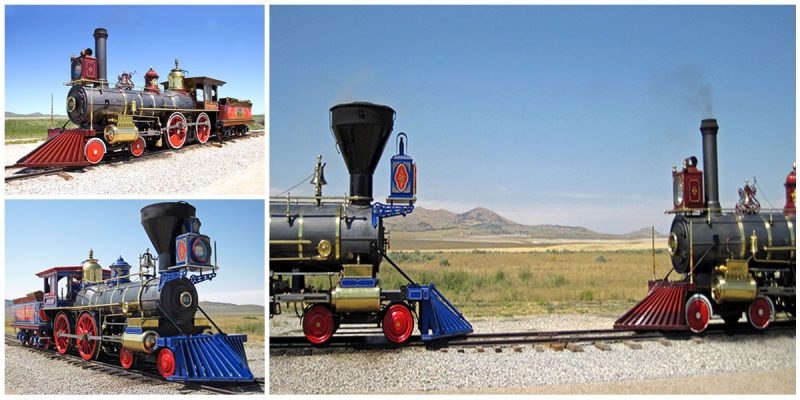The “Jupiter” (officially known as Central Pacific Railroad #60) has great historical significance because of its role in the development of America’s railroad. It was a 4-4-0 steam locomotive which made history as one of the two locomotives (the other being the Union Pacific No. 119) to meet at Promontory Summit during the Golden Spike ceremony commemorating the completion of the First Transcontinental Railroad.
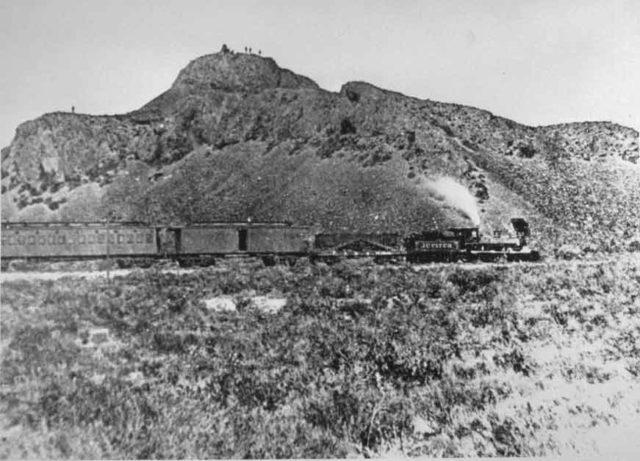
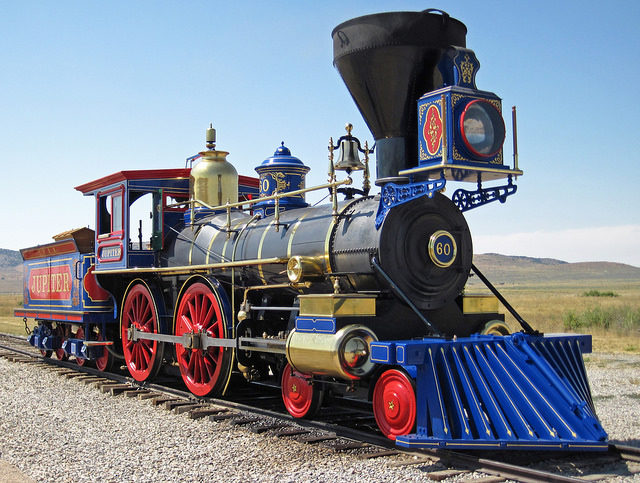
The Jupiter was built in September 1868 by the Schenectady Locomotive Works of New York, along with three other engines, numbered 61, 62, and 63 and named the Storm, Whirlwind, and Leviathan.
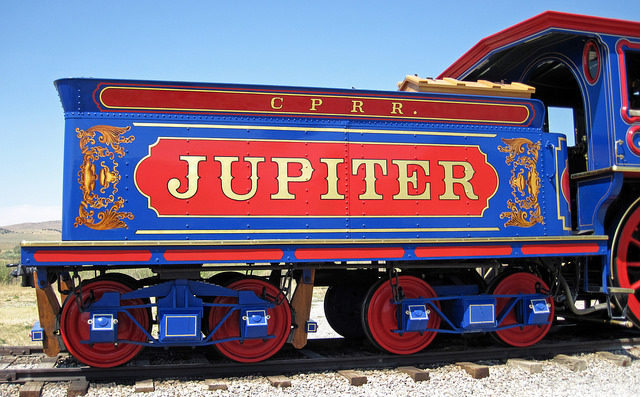
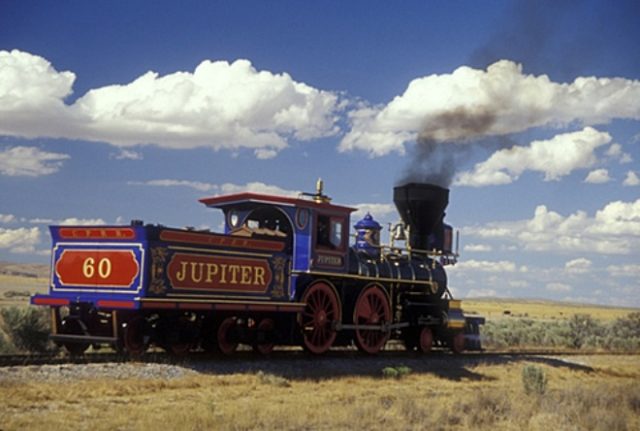
On May 10, 1869, the Central Pacific Railroad’s “Jupiter” touched cowcatchers with the Union Pacific R.R. at Promontory Point, Utah, completing the first transcontinental rail link across the United States. On that date, Stanford, an American tycoon, industrialist, politician, and a co-founder of Stanford University, and Union Pacific Vice President Thomas C. Durant drove the famous golden spikes symbolizing the end of a six-year construction program to connect the two railroads.
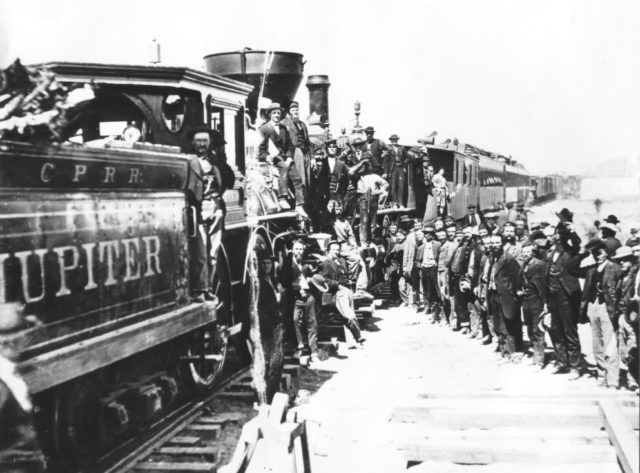
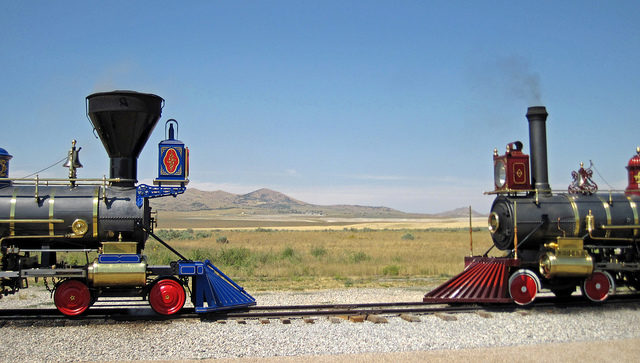
The original “Jupiter” was scrapped long ago. Both replica locomotive at Promontory Point (Jupiter and the 119) were constructed in 1980 for the National Park Service by Chadwell O’Connor Engineering Laboratories of Costa Mesa, CA. It was built with $1.5 million in federal funds.
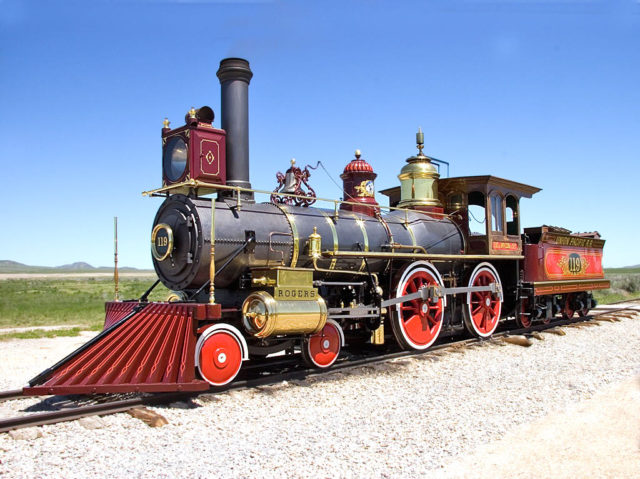
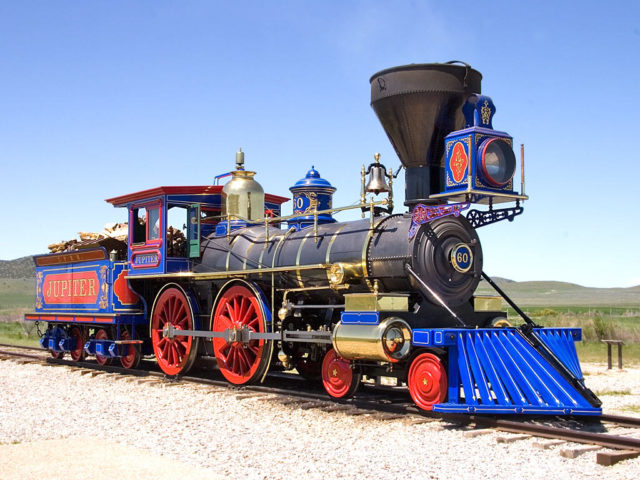
In 1974, the National Park Service had approached O’Connor Engineering Laboratories of Costa Mesa, California, to construct exact full-size replicas of the Jupiter and Union Pacific 119. They accepted the challenge of reproducing “Jupiter” and “119” as they were at the Golden Spike Ceremony.
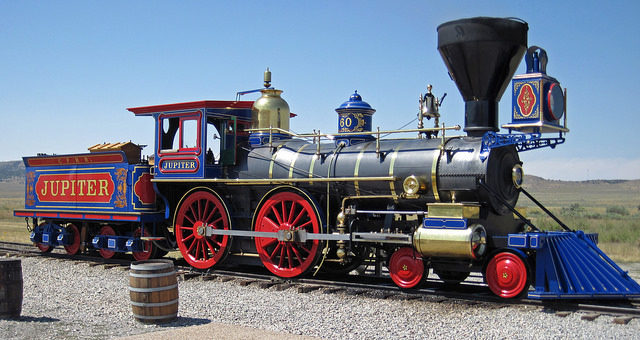
With no plans or blueprints, engineers and technicians set out to build the historic American Standard 4-4-0 locomotives. Ward Kimball, one of the six original Disney animators, was given the task of painting the replicas. The Jupiter was given a bright red paint scheme with gold leafing, typical of locomotives built in the 1870s. The striking colors chosen by Kimball became the accepted identity for the locomotives. The replicas were completed in 1979 and began operations on May 10 of that year, 110 years after the original Golden Spike ceremony, and continue to make demonstration runs.
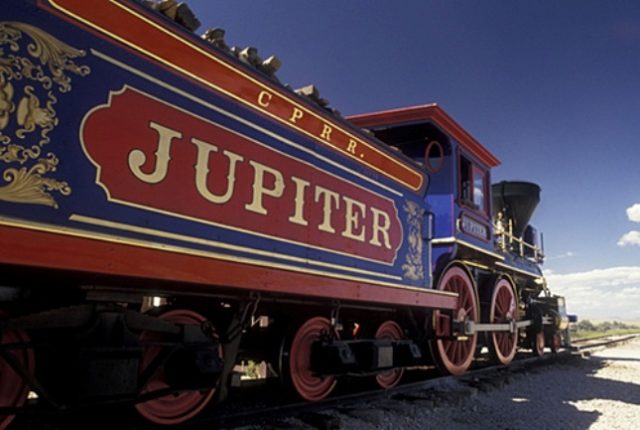
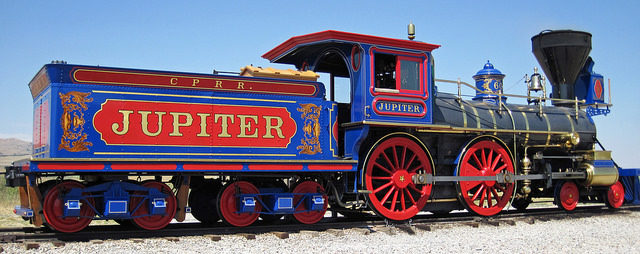
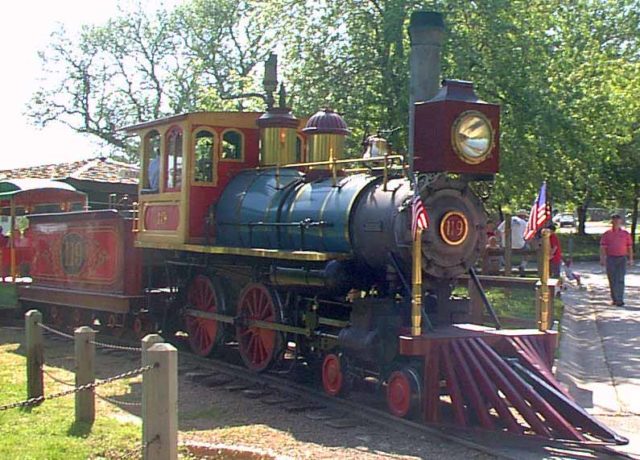
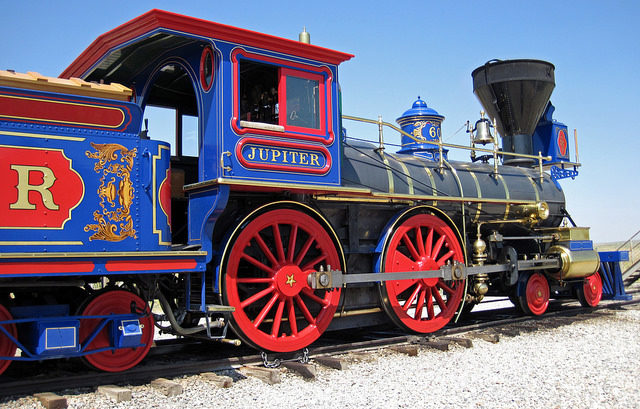
Now, almost 150 years later, the Golden Spike Ceremony is considered one of the most important milestones in 19th Century American history. Events are held around the country, but mostly at the Union Station in Ogden Utah and the Golden Spike Historic Site where they reenact the driving of the Golden Spike.
